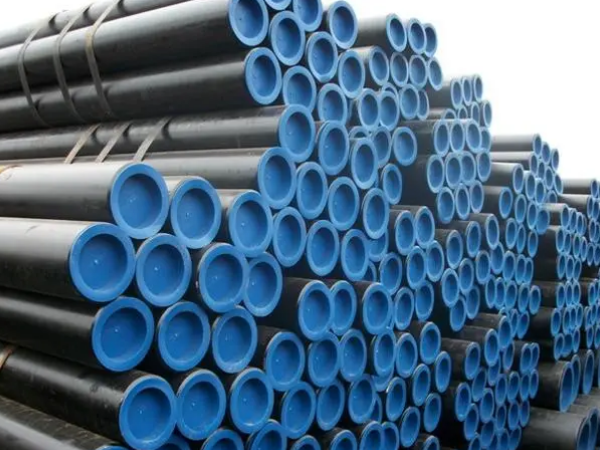The hardness test of the seamless pipe & tube should take its mechanical properties into account. There are two main types of mechanical property testing methods, one is tensile test and the other is hardness test.
The tensile test is to make a seamless steel pipe into a sample, pull the sample to fracture on a tensile testing machine, and then measure one or several mechanical properties, usually only tensile strength, yield strength, elongation after fracture and reduction of area. Tensile test is the most basic test method for mechanical properties of metal materials. Almost all metal materials have specified tensile tests as long as they have requirements for mechanical properties. Especially for those materials whose shape is not convenient for hardness testing, tensile testing has become the only means of testing mechanical properties.

The hardness test is to slowly press a hard indenter into the surface of the seamless pipe sample under specified conditions, and then test the indentation depth or size to determine the hardness of the material. Hardness test is the simplest, fastest and easiest method in material mechanical performance test. The hardness test is non-destructive, and there is an approximate conversion relationship between the material hardness value and the tensile strength value. The hardness value of the material can be converted into the tensile strength value, which has great practical significance.
Since the tensile test is not convenient for testing, and it is very convenient to convert from hardness to strength, more and more people only test the hardness of materials and seldom test their strength. Especially due to the continuous improvement and innovation of hardness tester manufacturing technology, some materials that could not directly test the hardness before, such as seamless steel pipes,
stainless steel plates and stainless steel strips, etc., are now possible to directly test the hardness. Therefore, there is a tendency that the hardness test gradually replaces the tensile test.
Seamless steel pipes generally use Brinell, Rockwell, and Vickers three hardness indexes to measure their hardness.
1. Brinell hardness
Among seamless steel pipe standards, Brinell hardness is the most widely used, and the indentation diameter is often used to express the hardness of the material, which is both intuitive and convenient. But it is not suitable for steel pipes of harder or thinner steel.
2. Rockwell hardness
The Rockwell hardness test of seamless steel pipe is the same as the Brinell hardness test, which is an indentation test method. The difference is that it measures the depth of the indentation. Rockwell hardness test is a widely used method at present. Among them, HRC is second only to Brinell hardness HB in steel pipe standards. Rockwell hardness can be applied to the determination of metal materials ranging from extremely soft to extremely hard. It makes up for the shortcomings of the Brinell method. However, due to its small indentation, the hardness value is not as accurate as the Brinell method.
3. Vickers hardness
The Vickers hardness test of seamless steel pipe is also an indentation test method, which can be used to determine the hardness of very thin metal materials and surface layers. It has the main advantages of the Brinell and Rockwell methods, and overcomes their basic shortcomings, but it is not as simple as the Rockwell method, and the Vickers method is rarely used in steel pipe standards.
Go here to learn more about "Non-destructive testing of seamless steel pipes"


